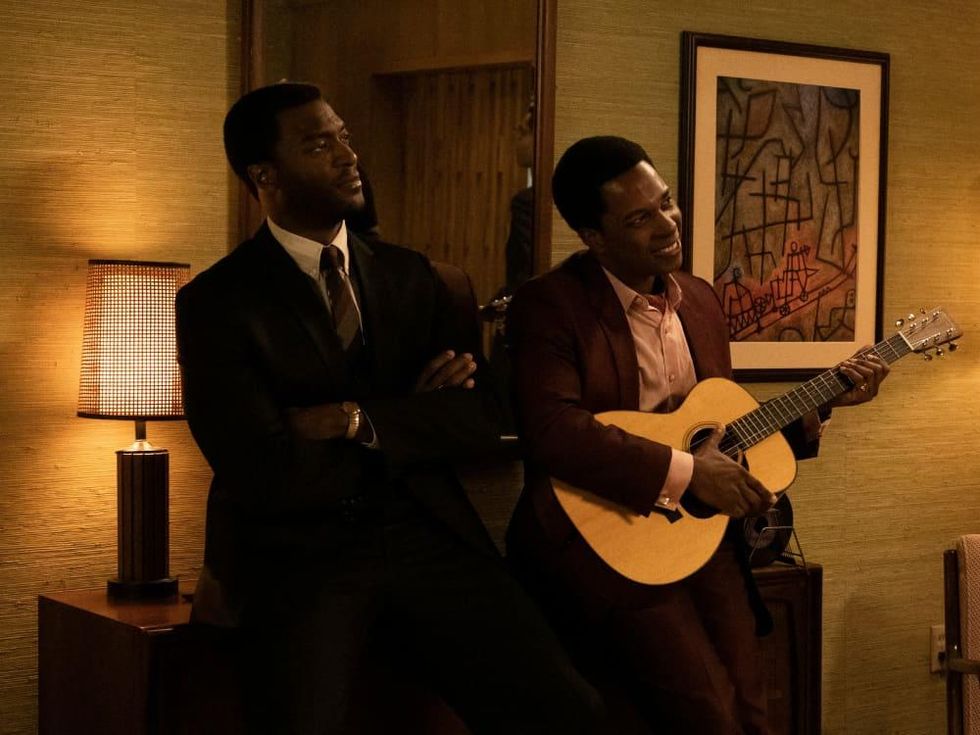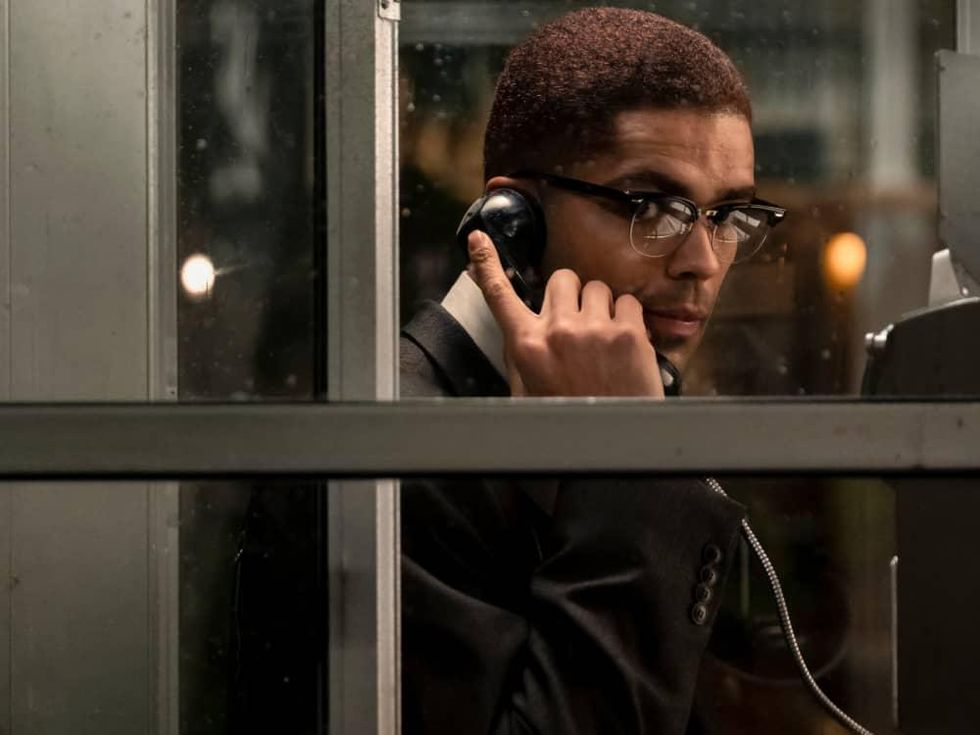Movie Review
Icons of the '60s gather for charged meeting in One Night in Miami
As far as high-powered meetings in the 1960s go, one featuring Nation of Islam leader Malcolm X, boxer Cassius Clay (soon to be Muhammad Ali), football player Jim Brown, and singer Sam Cooke is way up there. But it wasn’t a summit or other pre-planned event where they met, but rather a more-or-less impromptu get-together following Clay’s defeat of Sonny Liston in Miami on February 25, 1964.
No one knows for sure what was said during their time together at the Hampton House, a Jim Crow-era motel, but a fictional powerful conversation is brought to life in One Night in Miami…, based on the play by Kemp Powers. Written by Powers and directed by Regina King, the film breaks out from its stage roots by establishing each of the four main characters to show the positions they held and their mindsets at that particular point in time.
King re-creates a number of notable scenes, including Clay’s (Eli Goree) fights with both Liston and Henry Cooper; Cooke (Leslie Odom, Jr.) performing at several venues; and Malcolm X (Kingsley Ben-Adir) talking with his wife, Betty. Each one, including a small but racially-charged scene with Brown (Aldis Hodge), gives the audience insight into their experiences before their Miami meeting even takes place.
Once it does, the four go back-and-forth on a number of subjects, with all of them generally revolving around how each interacts with a world by-and-large controlled by white people, and how each is or isn’t trying to buck that system. With each undergoing significant change in their lives – Clay about to become Muslim, Malcolm X leaving the Nation of Islam, Brown embarking on a film career, and Cooke releasing a civil rights anthem – their meeting feels like an inflection point for Black America in the 1960s.
Even in the tight quarters of the motel room, King gives each actor plenty of space to bring their characters to life through the power of Kemp’s script, and there’s rarely a time when these four people being in the room at the same time doesn’t feel as momentous as it should. The grievances and concerns each of them holds bubble up throughout the night, with each subject building on the one before to create an indelible portrait of their lives.
The story is made all the more powerful because Cooke was killed nine months later and Malcolm X was assassinated almost exactly one year later. Each person was already on the precipice of significant change, but the fact that two of them would have so little time to leave their mark on the world makes their words hit even harder.
All four of the performances are stellar, and one wouldn’t work without the others. However, Goree and Odom, Jr. bring something extra special to their roles. It’s more than impersonation, although each does that extremely well. They each truly bring alive the personality and depth of the real-life person, making the moments when the film focuses on them a sight to see.
Where One Night in Miami… leaves its viewers is in a bittersweet position, glowing from the high of witnessing these four people together, but downcast knowing the relative lack of progress in the world in the ensuing 57 years. Perhaps this great film will help in the pursuit of the change Cooke hoped would some day come.
---
One Night in Miami... is currently showing in select theaters and on Amazon Prime Video.




